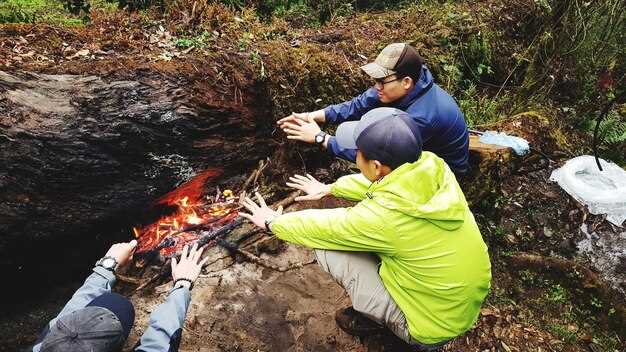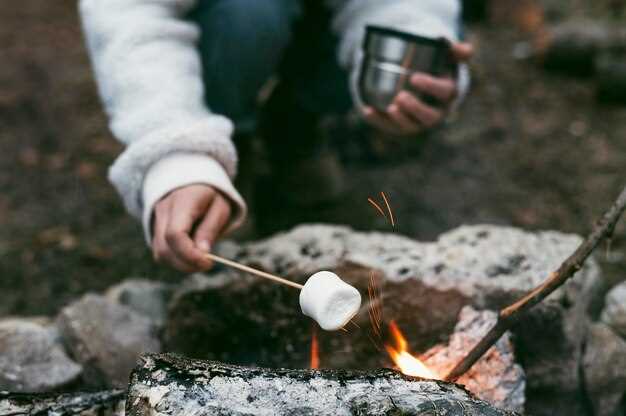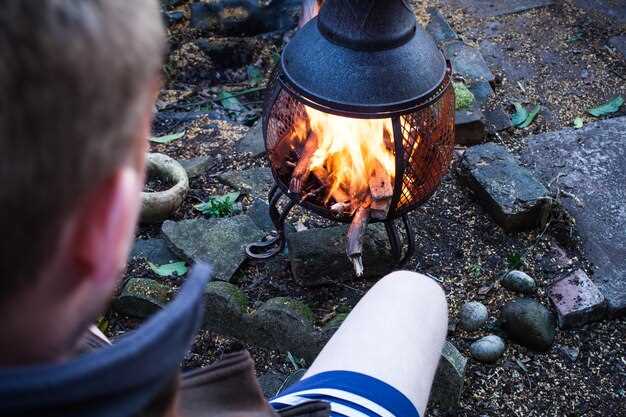
Starting a fire in wet conditions can be one of the most challenging yet essential skills for any outdoor enthusiast. Whether you’re caught in an unexpected rainstorm or navigating through a damp forest, the ability to ignite a fire is crucial for warmth, cooking, and signaling for help. Understanding the practical techniques for starting a fire when the elements are against you is not just a matter of survival; it can transform a challenging situation into a manageable one.
The key to successfully starting a fire in adverse weather lies in your preparation and knowledge of how to manipulate materials for maximum efficiency. Wet conditions often saturate traditional fire-starting materials, making them difficult to ignite. However, with the right approach, it is possible to overcome these obstacles. This article will explore various methods and tips for gathering and using fire-starting materials effectively, ensuring that you are never left in the cold.
From selecting resilient tinder to employing unique ignition techniques, this guide will equip you with the necessary skills and confidence to start a fire, even when facing the dampest of environments. Understanding the science behind combustion and the behavior of different materials can greatly enhance your chances of success. Prepare to learn how to adapt your fire-starting strategies and ensure that a wet environment doesn’t extinguish your survival options.
Selecting the Right Tinder for Moist Environments
When starting a fire in wet conditions, selecting the right tinder is crucial for success. Moist environments can make it challenging to ignite and sustain a flame, so it’s essential to choose materials that are not only readily available but also effective at catching fire despite high humidity levels.
Natural tinder options such as dry grass, pine needles, and bark from certain tree species can be suitable if found in dry pockets. Look for dead plant materials that are sheltered from rain, as they retain less moisture. Additionally, inner bark from trees like cedar or birch can serve as excellent tinder because they often have oils that promote combustion.
Another practical option is using man-made materials. Cotton balls or dryer lint, when treated with a flammable substance like petroleum jelly, can ignite easily in damp conditions. These items are lightweight and can be stored in waterproof bags, ensuring they remain dry until needed.
Additionally, consider carrying commercial fire starter products, which are specifically designed for quick ignition. These products often utilize wax or other additives to enhance their flammability, making them reliable even when surrounded by moisture.
To improve the chances of starting a fire, gather various tinder types and create a small nest or pile. This increases the surface area exposed to the flame and leverages the unique properties of each material to sustain ignition. Proper preparation and thoughtful selection can make a significant difference when attempting to start a fire in challenging wet conditions.
Building a Fire Lay that Overcomes Dampness

To effectively start a fire in wet conditions, selecting the right fire lay is crucial. A well-structured fire lay can help overcome the challenges posed by moisture. Begin with a stable base using dry, non-porous materials like stones or logs. This elevates your fire structure and prevents water from seeping up from the ground.
Next, gather several types of fuel, prioritizing dry tinder and kindling. Look for materials that are naturally resistant to moisture, such as birch bark, dry pine needles, or small twigs from the underbrush. If natural options are unavailable, consider using fire starter blocks or cotton balls soaked in petroleum jelly for optimal ignition.
Arrange the tinder in a small pile at the center of your fire lay. Surround this pile with kindling, placed in a teepee or lean-to shape. This design allows airflow, which is essential for combustion. Try to keep the kindling as dry as possible; if necessary, strip away the damp outer layers to expose the drier wood inside.
For the next layer, use larger pieces of wood arranged in a crisscross pattern. This structure, also known as the log cabin fire lay, encourages air circulation and provides stability as the fire grows. Ensure that some of these logs are relatively dry; any moisture will hinder the ignition process.
Once your fire lay is constructed, apply a fire starter to the tinder and ignite it. Monitor the fire closely, and if it struggles to catch, introduce more kindling gradually. By maintaining airflow and using the proper materials, you enhance your chances of successfully starting and sustaining a fire in wet conditions.
Using Tools and Techniques to Ignite a Flame in the Rain

Starting a fire in the wilderness during rainy conditions can seem daunting, but with the right tools and techniques, it is entirely possible. The primary objective is to create a sustainable flame that can withstand moisture while effectively burning the fuel. Preparation and knowledge are key components to success.
First, choose your ignition tools wisely. Waterproof matches, lighter tools, and fire starters are essential for quick ignition. Fire starters, such as cotton balls soaked in petroleum jelly or commercial fire starter sticks, can greatly enhance your chances of creating a flame. Ensure they are stored in waterproof containers for accessibility when needed.
Next, focus on gathering tinder, kindling, and fuel wood. Even in wet conditions, look for dry materials sheltered from the rain. Examine under tree branches, logs, or rocks where moisture might have been lessened. When choosing tinder, use materials like pine needles, dry grass, or bark that can ignite easily. If you can find birch bark, it’s an excellent choice due to its natural oils that aid combustion.
Once you have your materials, build a fire structure that will promote airflow and heat. The teepee or lean-to structures work well in these situations. Start by placing your tinder in the center, surrounded by kindling, which creates a funnel for heat. Gradually add larger pieces of wood as the fire establishes itself. This method allows the flame to grow without being overwhelmed by moisture from larger logs.
Additionally, employ methods to protect your fire from the rain. Create a makeshift shelter using branches or a tarp to shield your ignition site. This will reduce direct exposure to falling rain. Furthermore, raising your fire off the ground can provide added protection from dampness.
Finally, patience is crucial. If the initial attempt doesn’t yield a flame, reassess your materials and technique. Adjusting the positioning of kindling and ensuring there is enough airflow can make a significant difference. Every fire built in challenging conditions enhances your wilderness skills, making you more adept at survival.
